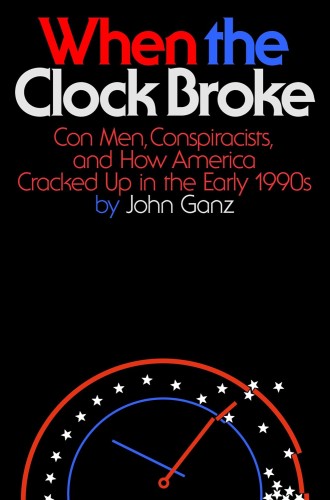What happened to US politics?
John Ganz explores the gritty political and cultural trends that erupted in the early 1990s and set the stage for the present.

When the Clock Broke
Con Men, Conspiracists, and How America Cracked Up in the Early 1990s
During the Trump years (the first ones, at least), I experienced a new political sensation. It wasn’t anger or dismay on policy grounds—I was long accustomed to that. The only word I could apply to it was humiliation at being ruled by such cheap frauds. There have been plenty of dreadful, foolish, and venal people in power, across all the administrations of my lifetime, and plenty of the sort one thinks of as fundamentally decent and yet given, as a professional necessity, to the dissembling that pervades public life. But people with neither talent nor morals, whose skulduggery served no plausible ideological agenda, who did not try to make their lies sound convincing, and who did not even seem to aspire to mediocrity were an unwelcome novelty. How had our republic come to be at the mercy of such buffoonish amateurs?
When the Clock Broke: Con Men, Conspiracists, and How America Cracked Up in the Early 1990s has prompted me to ask instead: Why did it take so long? John Ganz, who tracks the intellectual trends of the current and historical far right in his Unpopular Front newsletter, tells a story of American public life from the last days of the Cold War to the first months of the Clinton presidency, focusing on the cynics, freaks, and losing candidates of the age. This period may appear now as the beginning of America’s unipolar moment of global hegemony and of a long economic expansion. But Ganz takes us beneath the triumphal surface to the gritty and granular political and cultural trends that were gathering under and, with startling frequency, erupting from it. It was the era of David Duke, of Rush Limbaugh and the shock jocks, and of Pat Buchanan; of racially charged local politics and riots in Los Angeles and New York; of militia movements and domestic terrorism; of an eccentric third-party candidate who briefly led in the polls and, after extensive self-sabotage, still finished with almost 19 percent of the vote. It appears, in Ganz’s telling, as an uncanny dress rehearsal for our own period: history repeating, but the first time as farce.
The chief guide through Ganz’s house of horrors is a rather marginal former Senate staffer and right-wing columnist named Sam Francis. When the mainstream of conservative intellectual life sounded the themes of Enlightenment liberalism—favoring free trade, rights-based legal reasoning, and an internationalist orientation in foreign policy—Francis turned to nationalism, searching for a blood-and-soil motif inside the dissonant chorus of American history. He coined the phrase “middle American radicals” for his imagined constituency, people who were threatened economically by the decline of industrial employment, demographically by immigration and Black birth rates, and culturally by a government and leading institutions that ignored or outright scorned their “values.” He didn’t think of himself as a conservative at all but as a revolutionary seeking to radically alter the social order from within.




